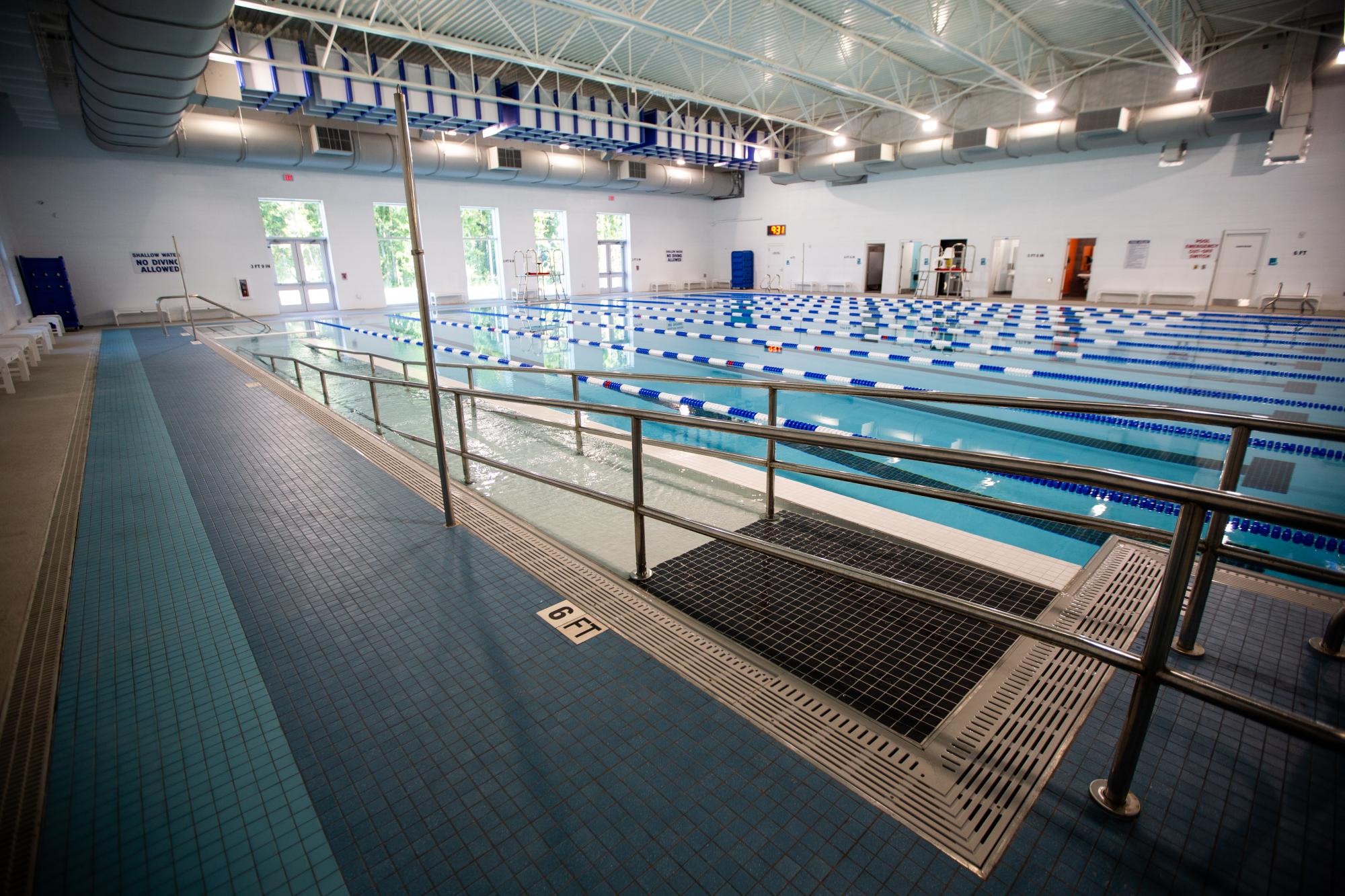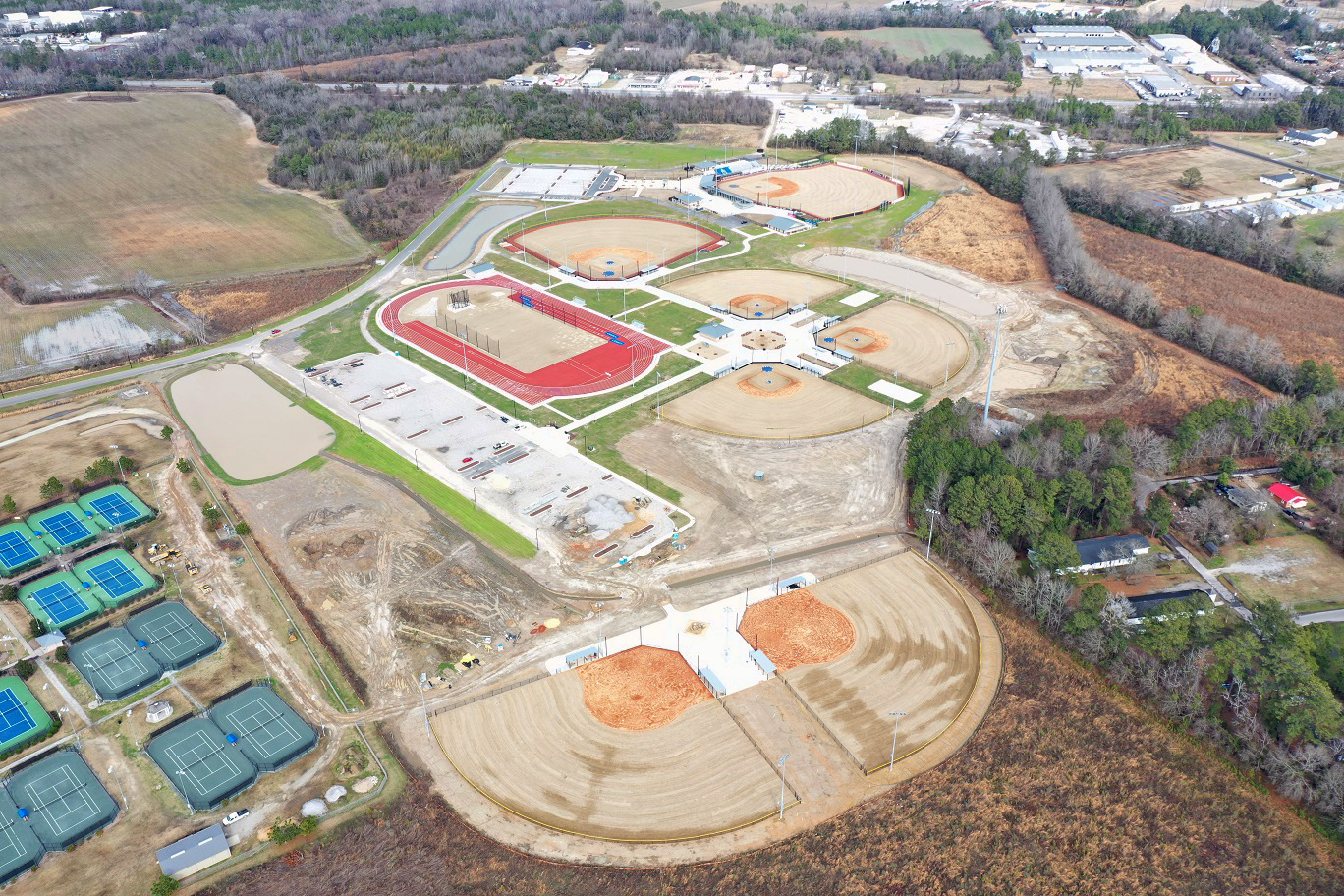For cities, making decisions on recreation facility development can be a balancing act between new activities and long-time favorites, and between recreation leagues for local residents and tournaments that bring people — and dollars — from out of town.
The key, recreation department leaders say, is surveying the evolving landscape, listening to what the public wants and taking care to provide recreation activities for all parts of the community.
In Hardeeville in the southern corner of South Carolina, Jennifer Combs, director of parks, recreation and tourism, described the city’s needs as simple: “to provide recreational opportunities for a better quality of life for a growing community.”
“Jasper County is a very rural community, and there was a need to provide more recreational opportunities and facilities that were lacking in our area while also understanding the need to bring our community together,” she said.

In addition to pickleball courts, the Hardeeville Recreation Center offers volleyball, racquetball and
basketball courts, a fitness center, and an indoor walking track. Photo: City of Hardeeville.
Hardeeville opened its new recreation center in 2021, complete with an indoor walking track, an NCAA-regulation basketball court, as well as volleyball, racquetball and pickleball courts.
“Adding the recreation center was a dream that encompassed many councils and administrations that believed in the vision of a future where recreation was central to improving the quality for life for residents inside Hardeeville, and would also engage economic development opportunities with stakeholders to generate revenue to put back into recreation,” Combs said.
She said the department’s philosophy is centered around traditional sports offerings, but Hardeeville is constantly evaluating the community’s needs and welcoming new sports and trends to offer to residents and visitors.
In today’s recreation world, that often means pickleball.
“Pickleball is by far one of the fastest-growing sports. We knew it could be a game changer as we are one of the only places in our area to offer pickleball year-round and indoors,” Combs said.
Residents who loved the sport and wanted an indoor place to play led the effort to add pickleball courts in Hardeeville.
“We listened and haven’t looked back,” she said. “It’s a popular offering and has generated revenue for the city. More programming is coming with the help of this wonderful group who believe so passionately about the sport.”
Further up the coast, the City of North Charleston is in the midst of a recreation building boom.
In the past three years, the city has built an athletic center with three basketball courts as well as an aquatic facility, and is in the middle of building a sports complex with basketball, football, tennis, hockey, inline skating, baseball and softball. It also just opened the Park Circle multi-use facility, home to what the city describes as “the world’s largest inclusive playground,” along with an inclusive baseball field, walking trails and flexible event space.

The North Charleston Aquatics Center includes a therapy pool. Photo: City of North Charleston.
The facilities are available for local residents’ use, and when they aren’t being used for local leagues or events, North Charleston benefits from visitors who use the facilities.
“The Charleston area and the Lowcountry is a destination for a lot of folks. We wanted to be able to have these facilities so we can host bigger, regional-type events like [Amateur Athletic Union] basketball and swim meets,” said TJ Rostin, North Charleston’s recreation director. “We’ve been able to have different associations rent our facilities for large events.”
He said North Charleston residents take priority, and the city schedules its own sports leagues for basketball and other sports. If the courts are free, the city allows visitors and organizations to rent the space for tournaments.
He said North Charleston tries to get community input in deciding what type of sports and activities to offer, and looks at building multi-use facilities as much as possible.
“We don’t look at trends and say, ‘Oh we need to build something because of a trend.’ But if we see a trend — and pickleball obviously is a trend — we try to renovate or revitalize the old facilities so we have a place for them to play pickleball. We have facilities close to these new facilities that needed a little TLC, so we put money into them to make pickleball courts.”
In the new North Charleston facility, the basketball courts also have pickleball lines, so the courts can be shared by the two sports.
“Make sure that what you’re going to build is going to benefit everyone, not just a particular sport or a particular trend. Try to make your facility multi-use, so your community can enjoy it 365 days a year, and it’s also something outsiders coming into your town can enjoy and utilize.”
With the Freedom Florence baseball complex that opened 30 years ago, the City of Florence “dipped its toe into the sports tourism industry,” said Tim Wilson, the athletics and sports tourism manager.

The 75-acre Florence Sports Complex, home to the Carolina Bank Baseball Stadium, five Little League
Fields, a high school baseball field and a collegiate-level outdoor track, opened in 2023 next to the
Dr. Eddie Floyd Florence Tennis Center. Photo: City of Florence.
Once it saw what those fields could accomplish, Florence and its partners saw the importance of larger facilities for both local rec leagues and the tourism industry. The Dr. Eddie Floyd Florence Tennis Center was added 12 years ago, with its 30 courts home to about 40 tournaments each year. The Florence Soccer Complex opened in 2018, with 14 fields providing room for recreation programs and travel tournaments.
The Pearl Moore Basketball Center opened in 2018, and that led to the Florence Sports Complex, which opened a whole new sector for sports and recreation tourism. It includes a park for the Florence Flamingos baseball team of the Coastal Plains League, along with a track for the 200 kids in the city’s youth track and field program, and baseball fields to bring the city’s three leagues into one place.
“You have to be engaged with the public,” said Florence’s Interim City Manager Scotty Davis. “You have to listen to them and follow what’s going on in the community. You have to track what’s going on and then you have to show public officials and leaders. Some will look at quality of life; others want to see that return on investment. We can show both groups that we are making a positive impact.”
But what goes into determining which sports are here to stay and what may be a fad?
Wilson said the city strikes its balance between different sports by first looking at the community’s needs. The track program, for example, had been using high school facilities, and while the relationship was strong, the school was limited in what it could offer the city’s young runners.
“Track needed a place to call home. And now that program can grow,” he said. “The opportunities at that venue to bring large-scale events to the city will have a positive impact on the community. The sky is the limit with that facility.”
Similar commitments have been made to offer larger and permanent homes to sports like basketball, while pickleball is also getting some attention.
“Pickleball is here to stay,” Wilson said. “If you’d asked me four years ago, I would have told you it was more of a fad. But now it’s spreading across all kinds of lines. Everybody’s playing pickleball. We have a strong pickleball community here and they want an indoor facility. We’re not at the point we can do that, but we are bidding out a project to take three tennis courts and create eight pickleball courts. That will give them 14 courts at one of our parks.”
Wilson advised municipalities that may be looking at expanding their recreation offerings to tap into the sports tourism market to find a niche and understand what the local market has to offer. He also stressed the importance of patience.
“It takes time. If you focus on building a brand of sports tourism, it’s not going to happen overnight,” he said. “There’s been a lot of tournaments I’ve bid on and didn’t get, but as we’ve gotten Florence’s name out there, and we’ve continued to improve and build new facilities, we are at the point now where we’re excited about the challenges and we’re going to get there.”
